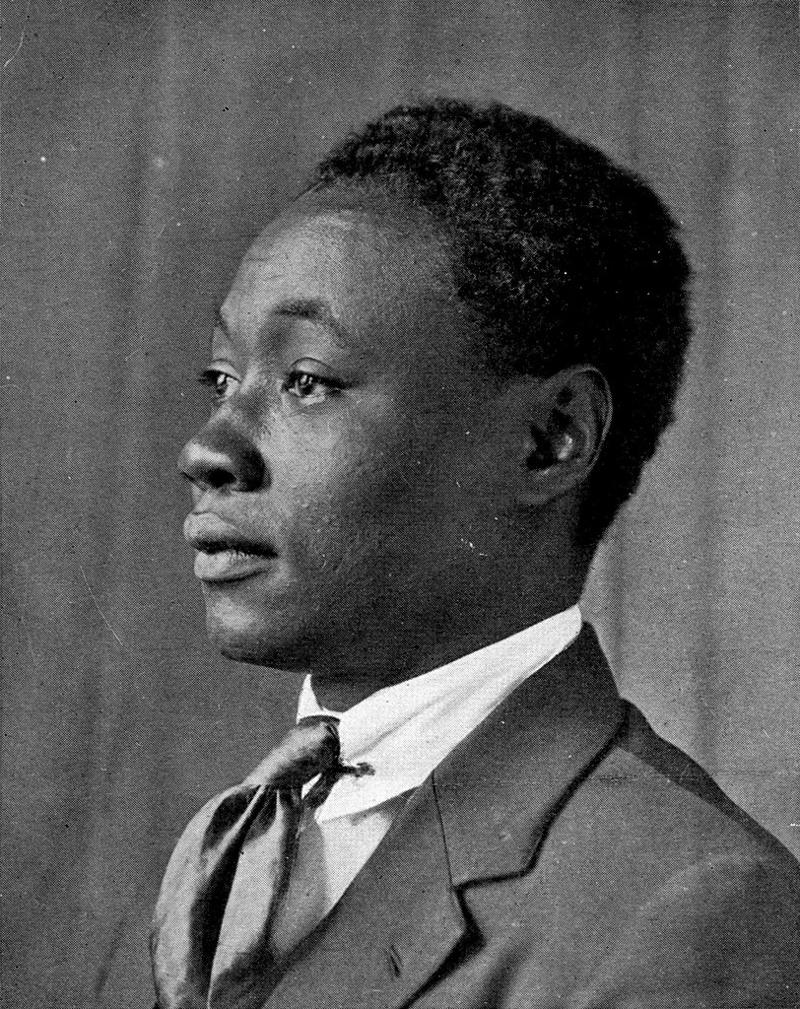‘If We Must Die’ and ‘Harlem Shadows’ by Claude McKay

Claude McKay, 1920
Photographer unknown [Public domain]
Festus Claudius (‘Claude’) McKay was a bisexual Jamaican-American poet, novelist and essayist who served as a leading figure in the Harlem Renaissance literary movement. Born to peasant farmers in 1889, he developed an early interest in British poetry.
He published his first two poetry collections – Songs of Jamaica and Constab Ballads – in 1912. These debut works addressed slavery, poverty, and the conditions of island life. Many were also notable for their pioneering use of Jamaican dialect. McKay emigrated to America that same year, briefly studying agriculture in the South before moving to New York City. Once there, he became active in radical politics and published poetry in leftist periodicals.
His most famous work, ‘If We Must Die’, was first published by the Communist magazine Liberator in 1919. It was written in response to the ‘Red Scare’, a period of intense anti-Communist fervour following the Russian Revolution which saw race riots sweep the nation. McKay saturated his Shakespearean sonnet with antiquated British diction to link the fight against black oppression to the heroic sentimentalism of Victorian poetry. Framing the struggle for black liberation in such terms was ingenious in that it effectively turned the poetic tradition of his oppressors against them.
McKay left the USA to travel around Europe later that year. By 1920, he had reached London, where he found a job at a radical newspaper. It was while living in England that he published his third collection of poetry, Spring in New Hampshire, which included ‘Harlem Shadows’. The poem employs iambic pentameter and a strict rhyme scheme to recount the plight of black sex workers in New York. Perhaps the most striking feature of the poem is its sympathetic presentation of the women: they are not figures of hate, but ‘little dark girls’ (5) who have been ‘pushed’ into their profession by the ‘stern harsh world’ (13–15). Though the scene is set in night-time Harlem, the workers’ fate is linked to a wider, global history of black oppression: their feet are said to be those of the entire ‘fallen race’ (16).
Following his return to the USA in 1921, McKay went on to publish a compendium of his verse, which he also called Harlem Shadows. He became more heavily involved in groups championing black rights and Communism – even travelling to the Soviet Union – before leaving for Europe once again to settle in France. The next eleven years of his life were highly productive. Splitting his time between Paris and North Africa, he published three novels – Home to Harlem (1928), Banjo (1929), Banana Bottom (1933) – and a short story collection called Gingertown (1932). He then left France to return to Harlem, where he wrote an autobiographical work entitled A Long Way from Home (1937), abandoned Communism, became a devout Catholic, and produced the essay collection Harlem: Negro Metropolis (1940). One of the most intriguing aspects facts about McKay’s career is that, following his death from heart failure in 1948, a number of his unpublished writings have been disseminated posthumously, including My Green Hills of Jamaica (1979), Harlem Glory (1990), and Amiable with Big Teeth (2017). One such novel – A Romance in Marseille – appeared as recently as 2020.
—Gavin Herbertson
If We Must Die
If we must die—let it not be like hogs
Hunted and penned in an inglorious spot,
While round us bark the mad and hungry dogs,
Making their mock at our accursed lot.
If we must die—oh, let us nobly die,
So that our precious blood may not be shed
In vain; then even the monsters we defy
Shall be constrained to honor us though dead!
Oh, Kinsmen! We must meet the common foe;
Though far outnumbered, let us show us brave,
And for their thousand blows deal one deathblow!
What though before us lies the open grave?
Like men we’ll face the murderous, cowardly pack,
Pressed to the wall, dying, but fighting back!
Harlem Shadows
I hear the halting footsteps of a lass
In Negro Harlem when the night lets fall
Its veil. I see the shapes of girls who pass
To bend and barter at desire’s call.
Ah, little dark girls who in slippered feet
Go prowling through the night from street to street!
Through the long night until the silver break
Of day the little gray feet know no rest;
Through the lone night until the last snow-flake
Has dropped from heaven upon the earth’s white breast,
The dusky, half-clad girls of tired feet
Are trudging, thinly shod, from street to street.
Ah, stern harsh world, that in the wretched way
Of poverty, dishonor and disgrace,
Has pushed the timid little feet of clay,
The sacred brown feet of my fallen race!
Ah, heart of me, the weary, weary feet
In Harlem wandering from street to street.
Some questions to consider
-
To what extent does ‘If We Must Die’ resemble Victorian poetry like ‘If’, ‘The Charge of the Light Brigade’, and ‘Invictus’? How and why does it differ?
-
How might knowing the facts of McKay’s life shape our understanding of his work?
Read more of McKay’s work
Harlem Shadows
The full text can be found for free at Project Gutenberg.
Constab Ballads
The full collection can be accessed via Wikimedia Commons.
Connections
If you’re looking for a longer reading experience, you could bring this text alongside W. E. B. Du Bois’s The Souls of Black Folk from Season 1.
On McKay
Claude McKay: Harlem on His Mind
This review of Claude Mckay: Rebel Sojourner In the Harlem Renaissance, published in the Washington Post in 1987, can be accessed via the Washington Post archive.
Claude McKay and ‘The White House’
This blog post from the Ransom Center discusses the posthumous release of McKay’s novel Amiable with Big Teeth.
Learn more about the Harlem Renaissance
History.com: The Harlem Renaissance
This resource introduces several great figures of the Harlem Renaissance.
Encyclopaedia Britannica: The Harlem Renaissance
This Encyclopaedia Britannica resource contextualises the literary movement.
Library of Congress: The Harlem Renaissance
This guide provides research resources, archival material and articles about the Harlem Renaissance.
Beyond McKay
Race and Resistance across Borders in the Long Twentieth Century
This TORCH (The Oxford Research Centre in the Humanities) research network and its blog facilitates conversations about race, racism, resistance, and liberation within Oxford and beyond.
About the Contributor
Gavin Herbertson has recently completed a DPhil in Caribbean Literature at St Catherine’s College, Oxford. His project focused on the points of intersection between Derek Walcott’s early poetry (1948–1962), Caribbean literary history, and models of global literary influence. In addition to working on Walcott, he has published work on a wide range of authors and texts, including the oeuvre of British-Trinidadian dub poet Roger Robinson, William and Dorothy Wordsworth’s miscellaneous writings, and Shakespeare’s The Tempest. He was the 2021 Queen Elizabeth Scholar at the University of Pennsylvania, and has recently taught Caribbean Literature on behalf of Oxford, Harvard, and William Jewell College, Missouri.




